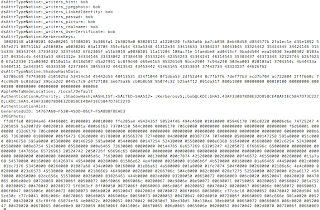Password Hashing: Best Practice
Last week I read a post on
Brian Krebs’ blog where security researcher Thomas Ptacek was interviewed about
his thoughts on the current landscape of password hashing. I found Thomas’ insights
into this topic quite pertinent and would like to reiterate his sentiments
by talking a little about the importance of choosing the right password hashing scheme.
The idea of storing
passwords in a “secret” form (as opposed to plain-text) is no new notion. In
1976 the Unix operating system would store password hash representations using
the crypt one-way cryptographic hashing function. As one can imagine, the processing power back
then was significantly less than that of current day standards. With crypt only
being able to hash fewer than 4 passwords per second on 1976 hardware, the
designers of the Unix operating system decided there was no need to protect the
password file as any attack would, by
enlarge, be computationally infeasible. Whilst this assertion was certainly
true in 1976, an important oversight was made when implementing this design
decision: Moore’s Law.
Moore’s Law states that computing power will
double approximately every two years. To date, this notion has held true since
it was first coined by Gordon Moore in 1965. Because of this law, we find that
password hashing functions (such as crypt) do not withstand the test of time as
they have no way of compensating for the continual increase in computing power.
The problem we find with cryptographic hashing functions is that whilst
computing power continually increases over time, password entropy (or
randomness) does not.
If we fast-forward to the
current day environment we see that not much has changed since the early
implementations of password hashing. One-way
cryptographic hashing functions are still in widespread use today, with SHA-1,
SHA-256, SHA-512, MD5 and MD4 all commonly used algorithms. Like crypt on the
old Unix platform, these functions have no way of compensating for an increase
in computing power and therefore will become increasingly vulnerable to
password-guessing attacks in the future.
Fortunately, this problem
was solved in 1999 by two researches working on the OpenBSD Project, Niels
Provos and David Mazieres. In their paper, entitled ‘A Furture-Adaptable Password Scheme’, Provos and Mazieres describe a cost-adaptable algorithm that adjusts
to hardware improvements and preservers password security well into the future.
Based on Bruce Shneier’s
blowfish algorithm, EksBlowfish (or expensive key scheduling blowfish), is a
cost-parameterizable and salted block cipher which takes a user-chosen password
and key and can resist attacks on those keys. This algorithm was implemented in a
password hashing scheme called bcrypt.
Provos and Mazieres
identified that in order for their bcrypt password scheme to be hardened
against password guessing, it would need the following design criteria:
- Finding partial information about the password is as hard as guessing the password itself. This is accomplished by using a random salt.
- The algorithm should guarantee collision resistance.
- Password should not be hashed by a single function with a fixed computational cost, but rather by of a family of functions with arbitrarily high cost.
If we think about cryptographic hashing functions
in use today - be it MD5, SHA-1, or MD4 - we notice they all have one thing in
common: speed. Each of these algorithms is incredibly quick at computing its
respective output. As hardware gets better, so too does the speed at which
these algorithms can operate. Whilst this may potentially be seen as a positive
thing where usability is concerned, it is certainly an undesirable trait from a
security standpoint. The quicker these algorithms are able to compute their
output, the less time it takes for the passwords to be cracked.
Provos and Mazieres were
able to solve this problem by deliberately designing bcrypt to be computationally
expensive. In addition, they introduced a tunable cost parameter which is able
to increase the algorithm’s completion time by a factor of 2 each time it is
incremented(effectively doubling the time it takes to compute the result). This
means that bcrypt can be tuned (i.e. incremented every 2 years) to keep up with
Moore’s Law.
Let’s have a quick look at
how bcrypt compares against other hashing algorithms. Let’s say we have a list of
1000 salted SHA-1 hashes that we wish to crack. Because they are salted, we can’t
use a pre-computed list of hashes against this list. We can, however, crack the
hashes one by one. Let’s say on modern hardware it takes a microsecond
(000000.1 seconds) to make a guess at the password. This means that per second we
could generate 1 million password guesses per hash.
In contrast, say we have the
same list but instead of SHA-1 the hashes have been derived using bcrypt. If
the hashes were say computed with a cost of 12, we are able to compute a
password guess roughly every 500 milliseconds. That is, we can only guess 2
passwords a second. Now if you think we have 1000 password hashes, we can only
generate 7,200 guesses per hour. As it would be more efficient targeting all
1000 hashes (as opposed to just one), we would be limited to approximately 7
guesses per hash.
Below is the output of a
quick program I created to display the time it takes to compute a bcrypt
comparison as the cost value is incremented. The test was conducted on a RHEL
system running a Xeon X5670 @ 2.9Ghz with 1024MB of memory.
The source code for this program can be found here.
The bcrypt password hashing
scheme is currently available in many languages including Java, C#,
Objective-C, perl, python, and Javascript among others.
I hope this post highlights the importance of using stronger password hashing schemes for modern day applications.



Comments